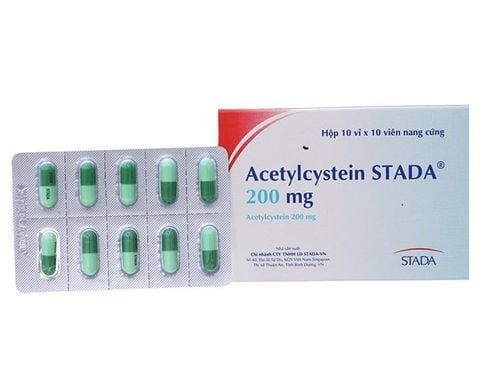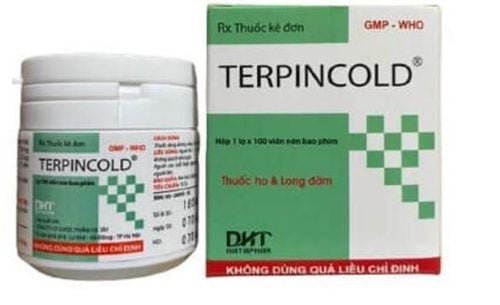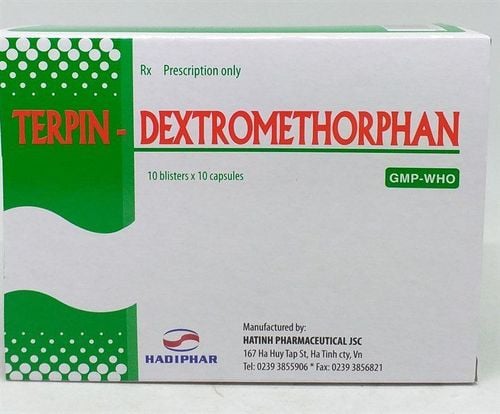This is an automatically translated article.
Bisolvon contains the active ingredient Bromhexin, which is used in the treatment of respiratory diseases caused by difficulty in expectoration and increased secretion of phlegm such as acute and chronic bronchitis... Let's find out the uses and notes when using it. Bisolvon drug through the article below.
1. What does Bisolvon do?
Bisolvon drug contains the active ingredient Bromhexin, indicated in cases of acute and chronic bronchopulmonary disease accompanied by abnormal mucus secretion. The active ingredient Bromhexin is synthesized from the herbal compound Vasicine. Preclinical studies have shown that Bromhexin has the effect of increasing the bronchial seroma rate, increasing mucus transport through the activation of the villi epithelium, and reducing the viscosity of mucus. In clinical trials, bromhexin also has the effect of transporting secretions, breaking down secretions in the bronchi to help facilitate the process of coughing and expectoration.
After treatment with Bromhexin, the concentration of antibiotics Erythromycin, Amoxcilin, Oxyretracyclin... in bronchial fluid and sputum increased.
The pharmacokinetics of Bisolvon are as follows:
Absorption: After oral administration, the active ingredient bromhexin is rapidly and completely absorbed from the gastrointestinal tract. The bioavailability (SKD) of the drug when oral solid and solution is similar. In which, the absolute bioavailability of Bromhexine Hydrochloride ranges from 22.2 ± 8.5% in solid form and 26.8 ± 13.1% in solution form. The rate of first-pass metabolism ranges from 75 to 80%. Taking bromhexine with food may lead to increased plasma concentrations. Distribution: Bromhexine administered intravenously is rapidly and widely distributed to body tissues with a volume of distribution (Vd) of approximately 1209 ± 206L (19L/kg). Clinical scientists studied the distribution into lung tissue (bronchi, parenchyma) after administration of 32mg, 64mg of bromhexine. The results showed that the concentration of bromhexin in lung tissue after 2 hours of taking the drug was 1.5-4.5 times higher than the concentration in the bronchial-lung tissue and about 2.4-5.9 times higher than the plasma concentration. Approximately 95% of bromhexine is bound to plasma proteins unchanged. Metabolism: Bromhexine is completely metabolised to dibromanthranilic acid and to a variety of hydroxylated metabolites. Brohexim itself and all its metabolites are conjugated mostly as O-glucuronides and N-glucuronides. There is no significant evidence of altered metabolic pathways by oxytetracycline, sulphonamide or erythromycin. Therefore, interactions due to CYP 450 2C9 and 3A4 substrates are unlikely. Elimination: The extraction rate of Bromhexin in the hepatic blood stream is higher (range 843 – 1073 ml/min), resulting in inter-patient and intra-patient variability (CV > 30%). Bromhexine concentrations decrease exponentially in plasma, specifically oral doses from 8 to 32 mg have a terminal elimination half-life ranging from 6.6 to 31.4 hours. The predictable elimination half-life of multiple doses of pharmacokinetics is 1 hour, so there is no accumulation with multiple dosing.
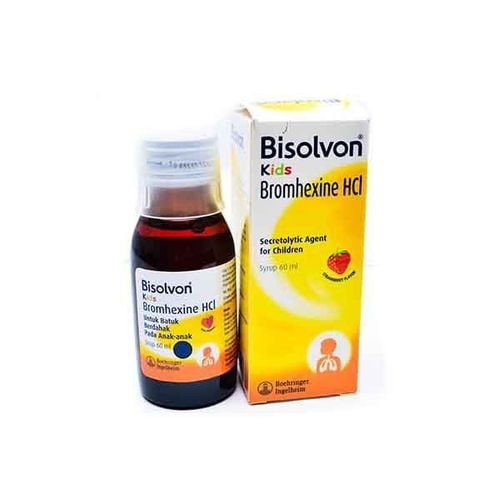
Thuốc Bisolvon chỉ định trong các trường hợp bệnh phế quản phổi cấp và mạn tính
2. Dosage of Bisolvon
Bisolvon is used orally with specific doses depending on the age and specific condition of the patient as follows:
Adults, children over 12 years old: Take 8mg once and take 3 times a day; Children from 6 to 12 years old: Take 4mg once and take 3 times daily; Children 2 - 6 years: Take 4mg once and take 2 times daily. In some cases, it may be necessary to increase the total daily dose of Bisolvon to 48 mg in adults when starting treatment with Bisolvon. Physicians should inform patients of the potential for increased mucus secretion during treatment with Bisolvon.
For indications of the drug in case of acute respiratory disease, the patient should notify the doctor if the disease symptoms do not improve or worsen during treatment with Bisolvon.
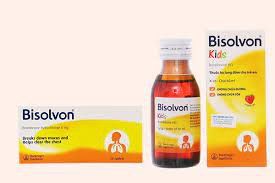
Thuốc Bisolvon được dùng bằng đường uống với liều dùng cụ thể
3. Side effects of the drug Bisolvon
Besides the effects of Bisolvon in the treatment of respiratory diseases, this drug also causes some side effects as follows:
Skin and subcutaneous tissue disorders and immune system disorders; Mediastinal disorders; Chest disorders; Hypersensitivity conditions such as urticaria, rash, anaphylaxis, pruritus, bronchospasm and other hypersensitivity conditions; Gastrointestinal symptoms such as nausea, vomiting, upper abdominal pain and diarrhea.
4. Note when taking medicine
Contraindicated to use Bisolvon drug for the following subjects:
Patients with hypersensitivity to Bromhexin or any ingredient in the drug; People with rare hereditary diseases, because there may be intolerance to the excipients of the drug. Use with caution:
Temporary toxic epidermal necrolysis (TEN) and severe skin lesions such as Stevens-Johnson syndrome have been shown to be associated with the use of expectorants such as Brohexine. The majority of patients experiencing this condition were explained by comorbidities and/or concomitant medications. In addition, in the early stages of Stevens-Johnson syndrome or TEN syndrome, patients will have symptoms similar to non-specific influenza such as body aches, fever, cough, rhinitis and sore throat. The confusion of symptoms may cause the patient to start symptomatic treatment with cold and cough medicine. Therefore, when new lesions appear on the mucous membranes or skin, the patient should see a doctor and stop the treatment with Bisolvon. Bisolvon tablets contain lactose as an excipient, so people with rare hereditary problems of galactose intolerance such as congenital disorders of carbohydrate metabolism should not use Bisolvon. Effects of the drug on special populations:
Pregnant women: Studies on the safety of Bisolvon in pregnant women are limited. However, animal studies have not shown harmful effects directly or indirectly related to reproductive toxicity. However, it is necessary to be cautious and limit the use of Bisolvon in pregnant women. Lactation: There is no evidence for the excretion of bromhexine and its metabolites and breast milk. Therefore, the use of Bisolvon in lactating women is not recommended. Machine operators and drivers: Bisolvon does not affect the patient's ability to operate machinery and drive. Drug interactions:
No adverse interactions between Bisolvon and other drugs have been recorded in clinical practice. However, to ensure safety and effectiveness in treatment, patients need to inform their doctor about all medications they are taking, do not stop or change the dose of Bisolvon without the consent of the doctor. treatment. In summary, Bisolvon is indicated in respiratory diseases due to difficulty in expectoration and increased phlegm such as acute and chronic bronchitis. To use the drug effectively and safely, the patient needs a prescription from a doctor or pharmacist.
Please dial HOTLINE for more information or register for an appointment HERE. Download MyVinmec app to make appointments faster and to manage your bookings easily.




